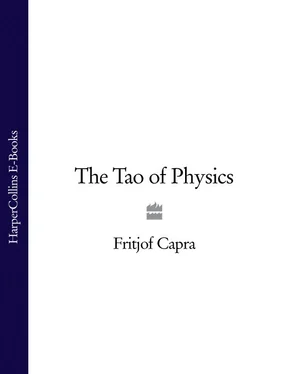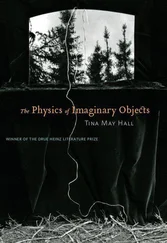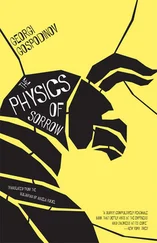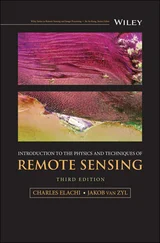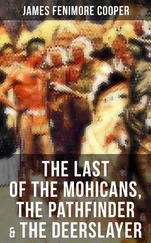Any path is only a path, and there is no affront, to oneself or to others, in dropping it if that is what your heart tells you … Look at every path closely and deliberately. Try it as many times as you think necessary. Then ask yourself, and yourself alone, one question … Does this path have a heart? If it does, the path is good; if it doesn’t it is of no use.
Carlos Castaneda, The Teachings of Don Juan
Modern physics has had a profound influence on almost all aspects of human society. It has become the basis of natural science, and the combination of natural and technical science has fundamentally changed the conditions of life on our earth, both in beneficial and detrimental ways. Today, there is hardly an industry that does not make use of the results of atomic physics, and the influence these have had on the political structure of the world through their application to atomic weaponry is well known. However, the influence of modern physics goes beyond technology. It extends to the realm of thought and culture where it has led to a deep revision in our conception of the universe and of our relation to it. The exploration of the atomic and subatomic world in the twentieth century has revealed an unsuspected limitation of classical ideas, and has necessitated a radical revision of many of our basic concepts. The concept of matter in subatomic physics, for example, is totally different from the traditional idea of a material substance in classical physics. The same is true for concepts like space, time, or cause and effect. These concepts, however, are fundamental to our outlook on the world around us and with their radical transformation our whole world view has begun to change.
These changes, brought about by modern physics, have been widely discussed by physicists and by philosphers over the past decades, but very seldom has it been realized that they all seem to lead in the same direction, towards a view of the world which is very similar to the views held in Eastern mysticism. The concepts of modern physics often show surprising parallels to the ideas expressed in the religious philosophies of the Far East. Although these parallels have not, as yet, been discussed extensively, they have been noticed by some of the great physicists of our century when they came in contact with Far Eastern culture during their lecture tours to India, China and Japan. The following three quotations serve as examples:
The general notions about human understanding … which are illustrated by discoveries in atomic physics are not in the nature of things wholly unfamiliar, wholly unheard of, or new. Even in our own culture they have a history, and in Buddhist and Hindu thought a more considerable and central place. What we shall find is an exemplification, an encouragement, and a refinement of old wisdom. 1
Julius Robert Oppenheimer
For a parallel to the lesson of atomic theory … [we must turn] to those kinds of epistemological problems with which already thinkers like the Buddha and Lao Tzu have been confronted, when trying to harmonize our position as spectators and actors in the great drama of existence. 2
Niels Bohr
The great scientific contribution in theoretical physics that has come from Japan since the last war may be an indication of a certain relationship between philosophical ideas in the tradition of the Far East and the philosophical substance of quantum theory. 3
Werner Heisenberg
The purpose of this book is to explore this relationship between the concepts of modern physics and the basic ideas in the philosophical and religious traditions of the Far East. We shall see how the two foundations of twentieth-century physics—quantum theory and relativity theory—both force us to see the world very much in the way a Hindu, Buddhist or Taoist sees it, and how this similarity strengthens when we look at the recent attempts to combine these two theories in order to describe the phenomena of the submicroscopic world: the properties and interactions of the subatomic particles of which all matter is made. Here the parallels between modern physics and Eastern mysticism are most striking and we shall often encounter statements where it is almost impossible to say whether they have been made by physicists or by Eastern mystics.
When I refer to ‘Eastern mysticism’, I mean the religious philosophies of Hinduism, Buddhism and Taoism. Although these comprise a vast number of subtly interwoven spiritual disciplines and philosophical systems, the basic features of their world view are the same. This view is not limited to the East, but can be found to some degree in all mystically oriented philosophies. The argument of this book could therefore be phrased more generally, by saying that modern physics leads us to a view of the world which is very similar to the views held by mystics of all ages and traditions. Mystical traditions are present in all religions, and mystical elements can be found in many schools of Western philosophy. The parallels to modern physics appear not only in the Vedas of Hinduism, in the I Ching , or in the Buddhist sutras , but also in the fragments of Heraclitus, in the Sufism of Ibn Arabi, or in the teachings of the Yaqui sorcerer Don Juan. The difference between Eastern and Western mysticism is that mystical schools have always played a marginal role in the West, whereas they constitute the mainstream of Eastern philosophical and religious thought. I shall therefore, for the sake of simplicity, talk about the ‘Eastern world view’ and shall only occasionally mention other sources of mystical thought.
If physics leads us today to a world view which is essentially mystical, it returns, in a way, to its beginning 2,500 years ago. It is interesting to follow the evolution of Western science along its spiral path, starting from the mystical philosophies of the early Creeks, rising and unfolding in an impressive development of intellectual thought that increasingly turned away from its mystical origins to develop a world view which is in sharp contrast to that of the Far East. In its most recent stages, Western science is finally overcoming this view and coming back to those of the early Creek and the Eastern philosophies. This time, however, it is not only based on intuition, but also on experiments of great precision and sophistication, and on a rigorous and consistent mathematical formalism.
The roots of physics, as of all Western science, are to be found in the first period of Creek philosophy in the sixth century B.C., in a culture where science, philosophy and religion were not separated. The sages of the Milesian school in Ionia were not concerned with such distinctions. Their aim was to discover the essential nature, or real constitution, of things which they called ‘physis’. The term ‘physics’ is derived from this Greek word and meant therefore, originally, the endeavour of seeing the essential nature of all things.
This, of course, is also the central aim of all mystics, and the philosophy of the Milesian school did indeed have a strong mystical flavour. The Milesians were called ‘hylozoists’, or ‘those who think matter is alive’, by the later Greeks, because they saw no distinction between animate and inanimate, spirit and matter. In fact, they did not even have a word for matter, since they saw all forms of existence as manifestations of the ‘physis’, endowed with life and spirituality. Thus Thales declared all things to be full of gods and Anaximander saw the universe as a kind of organism which was supported by ‘pneuma’, the cosmic breath, in the same way as the human body is supported by air.
The monistic and organic view of the Milesians was very close to that of ancient fndian and Chinese philosophy, and the parallels to Eastern thought are even stronger in the philosophy of Heraclitus of Ephesus. Heraclitus believed in a world of perpetual change, of eternal ‘Becoming’. For him, all static Being was based on deception and his universal principle was fire, a symbol for the continuous flow and change of all things. Heraclitus taught that all changes in the world arise from the dynamic and cyclic interplay of opposites and he saw any pair of opposites as a unity. This unity, which contains and transcends all opposing forces, he called the Logos.
Читать дальше
